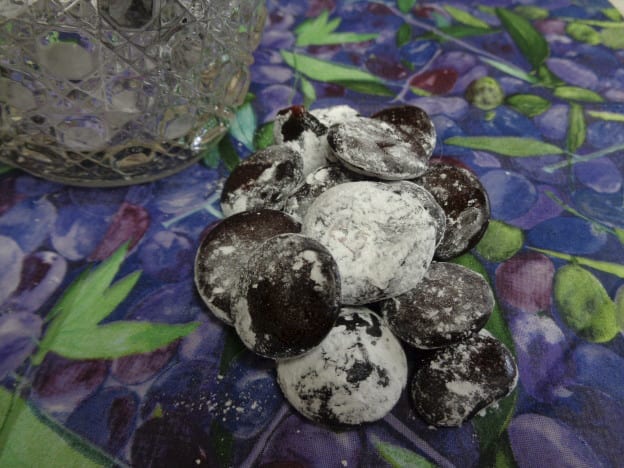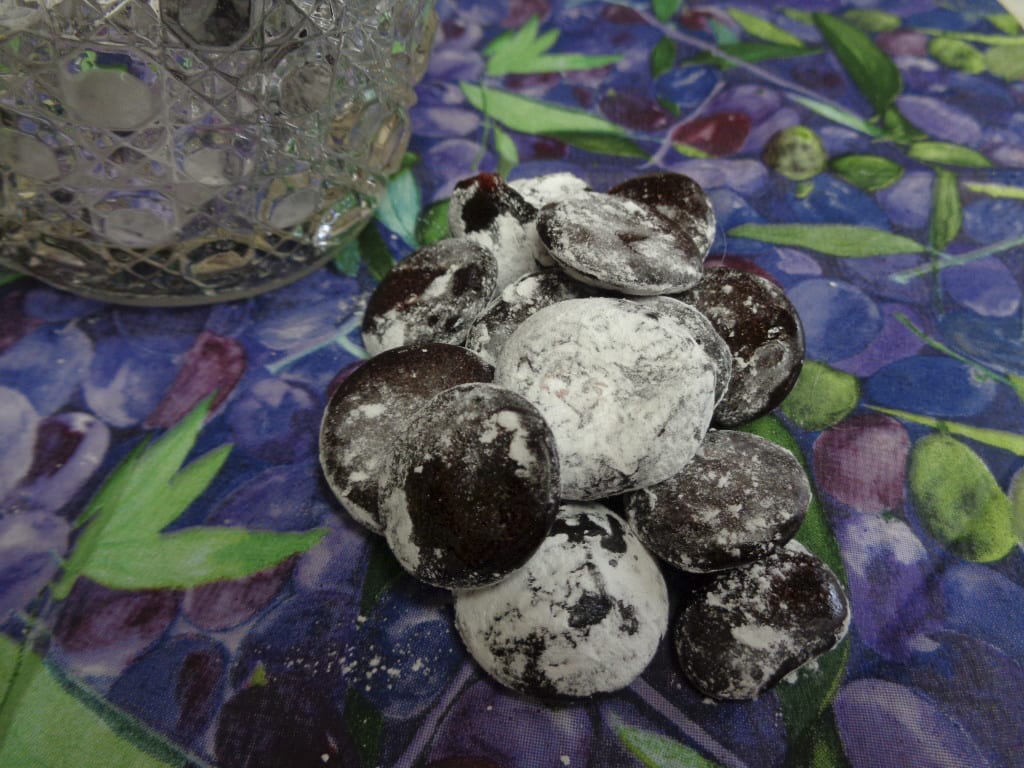I am starting this post with an apology to Marti Rasmussen. I have no idea where my head was yesterday and I mistakening attributed elderberry angel status to someone else. It was Marti who sent me the jar of elderberry juice that I have been transforming these last two days. Thank you Marti Rasmussen!
A lozenge is a small candy, usually with a medical component that is intended to melt slowly in the mouth bringing temporary relief to a sore throat and/or cough. Very often there is a menthol or eucalyptus style ingredient that helps with nasal congestion but can also be a bit intense, depending on the amount used. Additionally known as cough drops, troches and cachous, this a place where your kitchen witch skills can come out to play.
You will need:
1/2 cup elderberry honey syrup
2 cups sugar, I used organic cane sugar, honey works too
Everything else is optional and as you will read below even the elderberry syrup can be substituted.
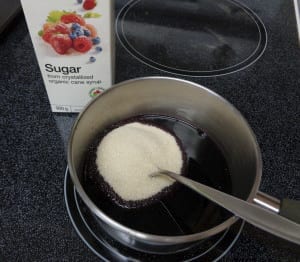 Yesterday, I shared the recipe for an Elderberry Honey Syrup , then I used 1/2 cup of that syrup to make these lozenges.
Yesterday, I shared the recipe for an Elderberry Honey Syrup , then I used 1/2 cup of that syrup to make these lozenges.
In a small pot heat the syrup and 2 cups of sugar to what is known as hard crack stage. I will get into that a little more in a moment.
Let’s start with the sugar. My choice was based on the fact the I personally, consider this medicine and the added micronutrients from a raw sugar are a bonus to the finished drops. You can complete this recipe with white sugar or a sugar/honey mix. There are reasons for each decision and I think the good thing to know is that there is no hard and fast rule. We each have health concerns, food preferences and budgets that will affect the choices we make and that is just fine. Nature loves diversity. My suggestions are how I have handled the situation in front of me. They are by no means the only way to accomplish the ultimate goal which is to sooth a sore throat.
As an example, if you do not have access to fresh elderberry juice, consider purchasing a package of dried elderberries. Using the dried berries with a selection of available herbs, create a strongly infused tisane and use that fluid as the base for your lozenges. Here are a few herbal suggestions and their traditional uses. There are many others that might be beneficial for your purpose.
Bee balm – is antiseptic with a calming effect on dry throats. It can assist in reducing low grade fevers and fighting colds.
Echinacea – stimulates our body to fight infection; not attacking an infection directly but supporting the cells that do the fighting.
Ginger – has anti-viral and anti-inflammatory properties that fight against colic, colds and flu.
Thyme – contains an essential oil called thymol. It is an antibacterial agent as well as a strong antiseptic and antioxidant, helping to sooth inflammation in mouth and throat. Uterine stimulation can occur in pregnant women who consume large quantites.
Marshmallow Root – helps inflamed membranes in the mouth and throat and its antitussive properties help reduce dry coughing preventing further eruptions.
These and other ingredients can be combined in any way that suits your taste buds and intentions. If you have the time and inclination, making several different batches and testing out the variations for what works best could be an adventure in learning.
As always, do not use these suggestions as a subsitute for professional advise if the condition you are concerned about persists.
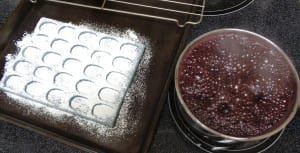 While the liquid is bubbling away, prepare your molds for use.
While the liquid is bubbling away, prepare your molds for use.
If you have access to silicone molds sprinkle with sifted icing sugar to stop sticking. Improvise if need be. These are actually my chocolate rune molds.
If Slippery Elm powder is handy, that can be mixed into the icing sugar as well to additionally support the throat. Slippery Elm can also be mixed with something like stevia powder when the intention is to reduce sugar content. I went with straight icing sugar as I wanted to be able to return the unused portion to the icing sugar container and not have another small container of left over white powder sitting around. I might feel differently if I was making more than one batch a year.
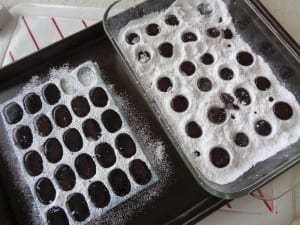 If no molds are handy you can create your own by sifting icing sugar into a pan and using the bottom of a measuring spoon to create cavities for the finished syrup to be dropped into. If your measuring spoon bowls are not rounded, try the end of a wooden spoon or something similar. You just need a little indentation to drop the liquid into as seen in the picture to the left.
If no molds are handy you can create your own by sifting icing sugar into a pan and using the bottom of a measuring spoon to create cavities for the finished syrup to be dropped into. If your measuring spoon bowls are not rounded, try the end of a wooden spoon or something similar. You just need a little indentation to drop the liquid into as seen in the picture to the left.
Okay! let’s get back to hard crack. ( Between hard crack and white powder, one would think this was an entirely different kind of post.) In this case I am talking about stages in candy making, specifically cooking sugar. Hard crack is between 300 – 310 degrees Fahrenheit and it is the highest temperature reached in candy making with the least amount of water content in the sugar mixture. The simplest way to know if you have reached the right temperature is to use a candy thermometer.
Option number two is the iced water method. Fill a bowl of ice with water and drop a teaspoonful of the liquid into the water. It should immediately turn hard. If it is still maleable cook a little longer and try again. It might be neccesary to repeat this several times.
Living at high altitude? You will get to hard crack stage quicker, about 2 degrees less for every 1000 feet you live above sea level.
As the drops are poured the liquid will cool quickly and as it cools become less stickly so less icing sugar will be inclined to stay attached. The purpose of the coating is to keep the lozenges separate while they are stored. Sprinkling a little on top as soon as possible is a good idea. Store in an airtight container, preferably in a dark location and use as needed.
Elderberries are powerhouses of good stuff. They can be intensely flavourful as well. These lozenges are just one example of preserving their healing qualities. Keeping a supply on hand will help the cold season go by so much more easily and as you know, a spoonful of sugar helps the medicine go down….in the most delightful way.
Elderberry Lozenges from My Kitchen Wand

